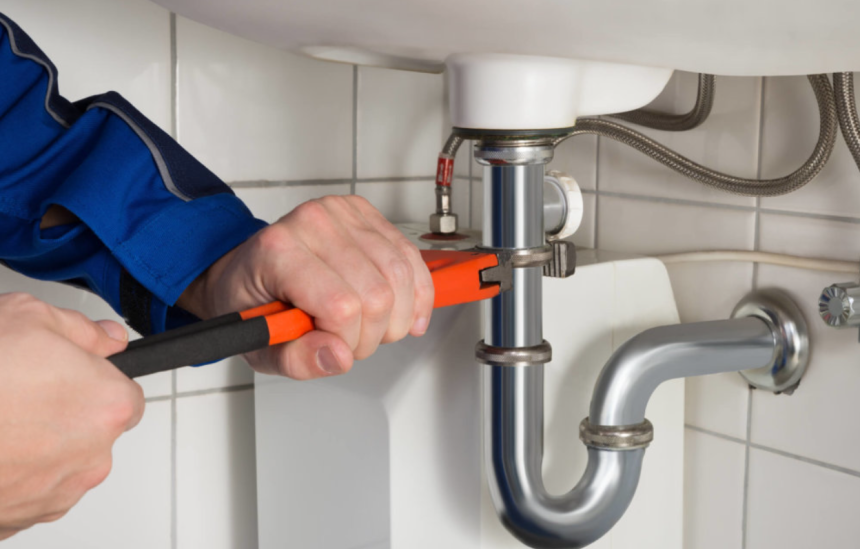With rich histories and distinct architectural elegance, older homes in Australia possess an unmistakable charm that captures the essence of bygone eras. However, along with their timeless beauty and character, these properties often host a suite of unique plumbing problems. A key determinant in the lifespan and efficiency of any home is the quality and upkeep of its plumbing systems. This is particularly true for older houses, where the original plumbing may have endured decades, even centuries of use.
Older Australian homes frequently feature original plumbing infrastructure, comprising materials, methods, and designs which pre-date modern guidelines and standards. Over time, the wear and tear these systems endure can make them more susceptible to various issues, such as leaks, blockages, and faulty fixtures.
Proactive care, regular maintenance, and timely repairs are essential to keep these problems in check. If left unresolved, minor plumbing issues can progressively escalate into more serious complications, leading to extensive damage, loss of functionality, and considerable repair costs.
This comprehensive guide aims to educate homeowners about the most common plumbing problems they may have to confront in older Australian homes, while also providing practical solutions to resolve and prevent such issues.
1. Pipe Corrosion and Leaks
The corrosion of pipes is one of the most commonly encountered issues in older properties. Originally, homes might have been fitted with pipes made from galvanised steel or iron. Over the years, these materials are prone to rust and corrosion due to continual exposure to water, which carries with it numerous naturally occurring minerals and other chemicals. This process erodes and weakens the pipe over time, leading to rust, corrosion, and ultimately, leaks. Concealed within walls, floors, or underground, these leaks can be challenging to detect.
To help homeowners avoid the challenges associated with corroding pipes and potential leaks, it’s essential to remain vigilant. How to spot early water leak symptoms is crucial to catching issues before they escalate. Homeowners should be aware of discolored water, reduced pressure, or unexpected spikes in their water bills, which may indicate hidden leaks. These indicators, along with regular inspections and timely upgrades to corrosion-resistant materials, can significantly reduce the likelihood of extensive damage and costly repairs down the line.
Neglecting these early signs may result in serious structural damage, from deteriorating walls, ceilings, and floorboards to compromising the overall structural integrity of your home. The potential damage isn’t limited to your property either; leaking pipes can lead to unnecessary water waste and increase chances of mould growth, affecting indoor air quality and potentially posing health risks to inhabitants.
Taking a proactive approach, like conducting regular inspections of your plumbing system and seeking professional guidance at the first sign of issues, can ensure that corrosion is detected and addressed early. You can prevent more considerable problems from developing down the line. Upgrading older pipes with modern, corrosion-resistant materials such as copper or PEX is often a wise investment, enhancing the durability and performance of your plumbing system.
2. Blocked Drains and Sewer Lines
Blocked drains and sewer lines pose another common challenge for the owners of older homes. Over years of use, these lines can often become obstructed with a rather unsavoury mix of household waste – from grease, hair, and soap to foreign objects. Furthermore, tree roots can infiltrate sewer lines in search of water, causing blockages or cracks in the pipeline that can escalate to significant issues if left unchecked.
The symptoms of a blocked drain or sewer line can be quite recognisable. Frequent backups or slow draining sinks and showers, unpleasant odours emanating from drains, gurgling sounds from your pipes, or even wet patches in your lawn (over the sewer line) can all indicate a blockage in your system.
While short-term solutions like plunging or chemical drain cleaners can clear minor blockages, they are typically limited in effect and not suitable for significant, stubborn obstructions. Additionally, these methods can sometimes cause further damage to older pipes already compromised by age.
Long-term fixes often require the expertise of a professional best plumber in adelaide. With access to specialised tools and equipment (like cameras capable of inspecting internal pipe conditions), plumbers can accurately identify and assess the scale and location of blockages. Regular professional cleaning is another proactive measure to prevent recurring obstructed lines, ensuring an efficient and sanitary plumbing system.
3. Low Water Pressure
Low water pressure is a recurring grievance many owners of older homes share. This issue can be particularly frustrating as it affects daily activities such as showering, doing dishes, or watering the garden. Older plumbing systems are especially prone to factors contributing to low water pressure, due to time-related wear and tear, pipe leaks, accumulating corrosion or mineral build-up within the pipes, or even deteriorating fixtures and fittings.
Understanding if the problem is localised or widespread is a crucial first step to diagnosing the cause of low water pressure. If the issue persists only in certain areas, it could be due to clogged aerators or showerheads, a problem which can be remedied by simply cleaning or replacing the affected fixture.
However, if the problem is widespread, affecting multiple areas of your home, it points towards a more substantial systemic issue. It could potentially be due to aged pipes with internal corrosion or deposit blockages, or even a hidden pipe leak elsewhere in your home’s plumbing network. Addressing such extensive issues might require the expertise of a trained professional to offer a comprehensive assessment and solution.
In the long term, to prevent low water pressure from persisting or recurring, it may be worth considering the replacement of old, worn-out pipes with new ones. Modern materials come with several benefits, like resisting internal deposit build-up, enduring greater water pressure and facilitating better flow performance.
4. Outdated Fixtures and Fittings
Outdated fixtures and fittings in older properties commonly lead to a series of problems: toilets running incessantly, taps that incessantly drip, leaking showerheads, and low water efficiency, to name a few. Not only do these issues cause needless water wastage, but they can also lead to escalating utility bills as the excessive, unutilised water accumulates over time.
Upgrading these outdated components to modern fixtures can translate into multiple benefits. Contemporary fixtures are designed with water efficiency at their core, reducing unnecessary water usage and optimising flow performance, leading to noticeable reductions in your water bills. Additionally, because they are built for durability, these fixtures are less prone to developing leaks or breaking down, ensuring reliable performance over an extended time.
Choosing the correct upgraded fixtures requires careful consideration. Factors such as the functional needs of households, the aesthetics of the home, plumbing compatibility, and water efficiency should all be considered. Balancing these elements will ensure that your new fixtures not only perform well and lower water wastage but also visually complement your home’s historic charm.
5. Faulty Water Heaters
Water heaters in older properties often bear the brunt of the years, presenting a range of issues that affect the comfort and convenience of inhabitants. An average water heater has a lifespan of about 8 to 12 years. If your home’s water heater surpasses this age mark, it might be showing signs of diminished efficiency or impending failure.
Common issues with older water heaters include rusty tanks, failing heating elements, and a build-up of sediment in the tank – problems that directly affect the heater’s capacity and efficiency. In more severe cases, leaks can occur, constituting a more immediate problem that may cause water damage to your home.
Maintaining a regular maintenance schedule for your water heater can significantly extend its life and optimise its performance. Annual tank flushing to rid the system of sediment build-up, regular checks for corrosion on the anode rod, and insulating the heater tank are all effective maintenance tasks. However, if these problems persist, or your water heater begins showing signs of age, it may be time to consider a replacement as the most energy-efficient and cost-effective solution.
Conclusion
From pipe corrosion and leaks to blocked drains and sewer lines, low water pressure, outdated fixtures, and faulty water heaters – these are common plumbing issues that owners of older homes in Australia often grapple with. By proactively maintaining and, where needed, updating the home’s plumbing system, homeowners can prevent minor problems from ballooning into major headaches requiring costly and extensive repairs.
Engaging professional plumbing services when needed can be instrumental in maintaining the longevity and functionality of older homes, allowing their inherent charm and character to take centre stage. A well-maintained plumbing system not only safeguards your property but also contributes to a more comfortable, healthier living environment.
In an older home, addressing any plumbing concerns as they arise and investing in the regular upkeep of your plumbing system is always a good idea. For now, and for the future, it pays to keep your home’s plumbing in peak condition.














